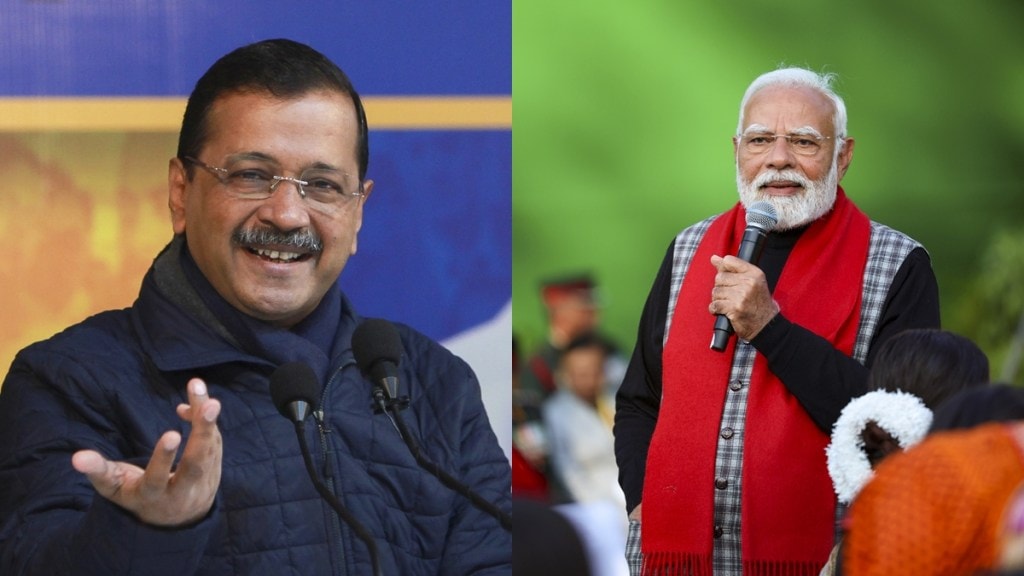Ahead of the Delhi Assembly elections, the political landscape is buzzing with slangs, slogans, one-liners, and AI-generated memes, as the Aam Aadmi Party (AAP), BJP, and Congress intensify their campaigns.
The AAP has coined phrases like “Bharatiya Jhootha Party” (Indian Liar Party) and “Gali Galouch Party” (Abusive Party) to target the BJP, accusing the ruling party of failing to fulfill its promises, particularly in creating two crore jobs annually. Prime Minister Narendra Modi, in return, has branded AAP as “AAP-Daa” (disaster) and Kejriwal as the “Ghoshna Mantri” (Minister of Announcements) for his alleged unfulfilled promises.
Not to be left behind, the Congress has used the moniker “Farziwal” (Fake) for Kejriwal and accused him of being a “Chhota Recharge” (small recharge) of Modi. As the political rhetoric heats up, memes and satirical one-liners dominate the discourse, making the race as much about narrative control as governance.
In its bid for a third consecutive term in power, the AAP has targeted the BJP’s tax policies, labelling them “tax terrorism.” AAP chief Arvind Kejriwal recently introduced a seven-point manifesto, focusing on the middle class and accusing the BJP of exploiting this demographic for taxes without addressing their concerns.
The AAP has also taken aim at the BJP’s “Sankalp Patra” (manifesto), dismissing it as a “Vinash Patra” (letter of destruction) and raising doubts about its promises. To counter the BJP’s claims, the AAP has portrayed itself as the defender of law and order, with slogans such as “Ram Bhakt” (devotees of Ram), in contrast to the BJP’s alleged “Ravan Bhakt” (devotees of Ravan).
Punjab Chief Minister Bhagwant Mann, known for his comedic background, is adding humour to the campaign, urging voters to press the “jhadoo” (broom, AAP’s symbol) button on February 5 and joking that a glance at the BJP’s “lotus” symbol might result in “motiyabind” (cataract) due to the party’s corruption.
Meanwhile, the BJP has hit back with force. Modi has referred to AAP as “AAP-Daa” and accused Kejriwal of mismanagement and corruption in his tenure as Delhi’s chief minister. The BJP also introduced the term “Ghoshna Mantri” to mock Kejriwal’s numerous announcements, alleging that his promises are often unfulfilled.
The BJP’s campaign has drawn from popular culture, using a line from the movie Bunty Aur Babli (“Aisa koi saga nahi, jisko mahathug ne thaga nahi”) to accuse the AAP of corruption. They have also labelled Kejriwal a “Chunavi Hindu” (Hindu only during elections) following his recent pledge to provide Rs 18,000 monthly to priests and gurdwara granthis.
As for the Congress, it has positioned itself as a challenger, launching the “AAP ke Paap ka Pardafash” (AAP’s sins exposed) campaign. Calling Kejriwal a “behroopia” (imposter), the party aims to expose what it sees as the flaws of both the AAP and BJP.
The political battle has spilled over to social media, with memes, creative spoofs, and online wars. Some voters find this amusing, while others argue that the use of memes marks a decline in the country’s political discourse.
The elections, set for February 5, have become a crucial test for the AAP’s governance model, which emphasises free welfare schemes. The ruling party faces strong competition from the BJP, which is seeking a return to power after more than 25 years. The Congress, although trailing behind, hopes to make a comeback.
As Delhi heads to the polls, the political climate is charged with slogans and counter-slogans. The results, to be announced on February 8, will determine whether this verbal duel translates into votes and reshapes the city’s political landscape.

